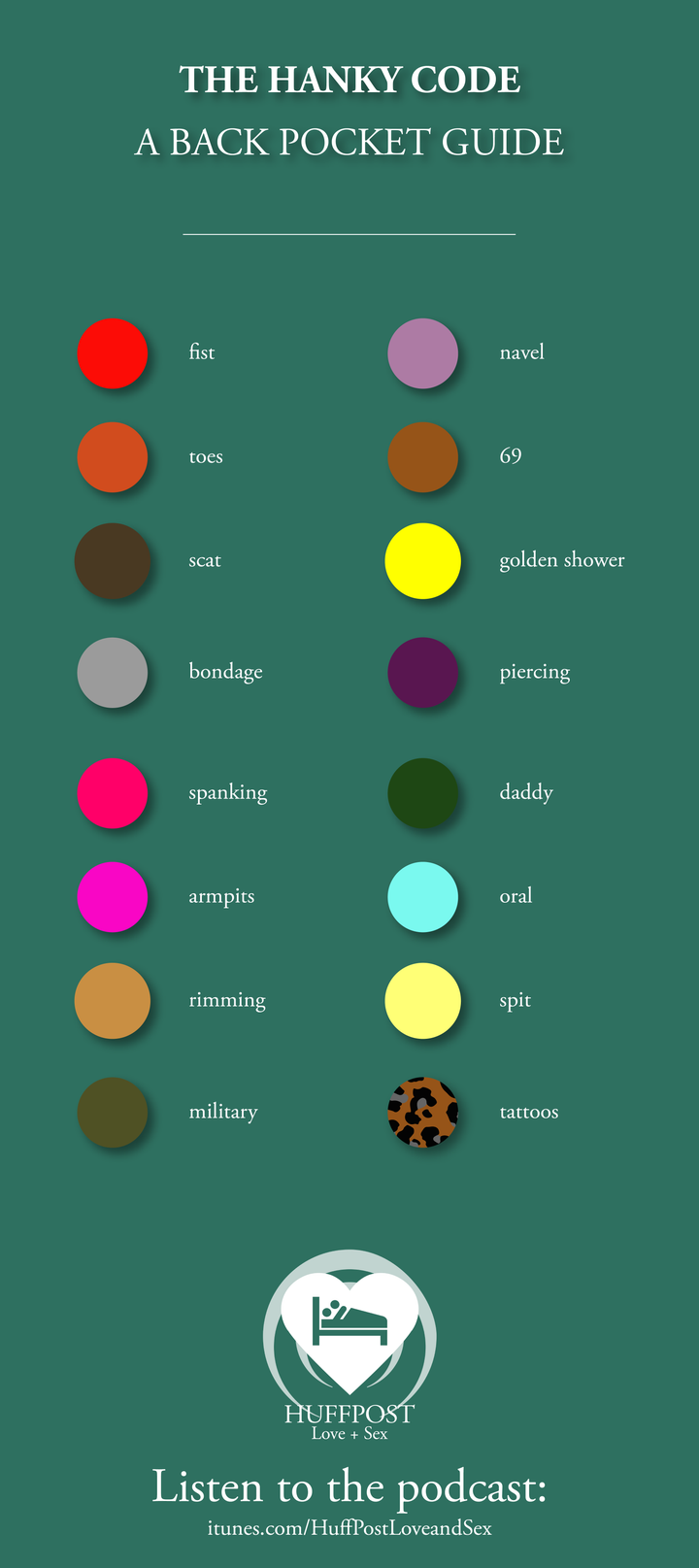In a recent episode of The Huffington Post Love+Sex Podcast about sex tourism, co-hosts Carina Kolodny and Noah Michelson chatted with Matt, a DJ from Australia who travels halfway around the world each year to attend San Francisco's Folsom Street Festival, the world's biggest leather event.
While chatting with Kolodny and Michelson, Matt brought up "the hanky code," a form of covert communication that some gay men used in the '70s and '80s to signal their sexual interests and desires to other men. As Fusion.com notes, "Men who participated in this form of flagging placed differently colored handkerchiefs in the back pockets of their pants: the left side for dominant sexual partners (tops) and the right side for submissive sexual partners (bottoms)." For instance, if you are wearing a light blue hanky in your left back pocket, you're looking for someone to perform oral sex on you. If you are wearing a light blue hanky in your right back pocket, you're looking to perform oral on someone else.
After the sex tourism episode of the Love+Sex podcast aired, many listeners remarked that they had never heard of the hanky code and were curious to learn more about which colors signified which acts and preferences. So, in the handy hanky chart below, we've included a variety of colors and their corresponding interests. You can find a larger list here.

The origin of the hanky code is unclear. One legend claims it may date back to the mid-19th century when San Francisco's population began to explode and was made up of a large majority of men who had traveled to the city looking for work. According to SFGayHistory.com, "as a result, men were forced to dance together at socials, with some men wearing a blue bandanna to show that they were assuming the male leading parts in the dance while others wearing red bandannas to show they were taking the female following role in the dance." Another theory suggests that in the 1970's "a journalist from the Village Voice wrote that instead of wearing keys to indicate if someone was a 'top' or 'bottom,' gays should be more subtle and just wear different colored hankies."
Wherever it came from, the code, though rarely used today, offers a revealing glimpse into queer history and how some men overcame the problem of identifying men who were not only interested in having sex with other men but also had the same (or in some cases, opposite) desires. For more from Matt about The Folsom Street Festival and the hanky code -- as well as other forms of sex tourism around the world -- check out the Love+Sex Podcast below:
This podcast was produced and edited by Katelyn Bogucki and edited by Nick Offenberg. Production assistance and design was provided by Lauren Bell.
Like Love + Sex? Subscribe, rate and review our podcast on iTunes.
Have an idea for an episode? Find us on Twitter at @HuffPostPodcast or email us at loveandsexpodcast@huffingtonpost.com.
Also on The Huffington Post:

